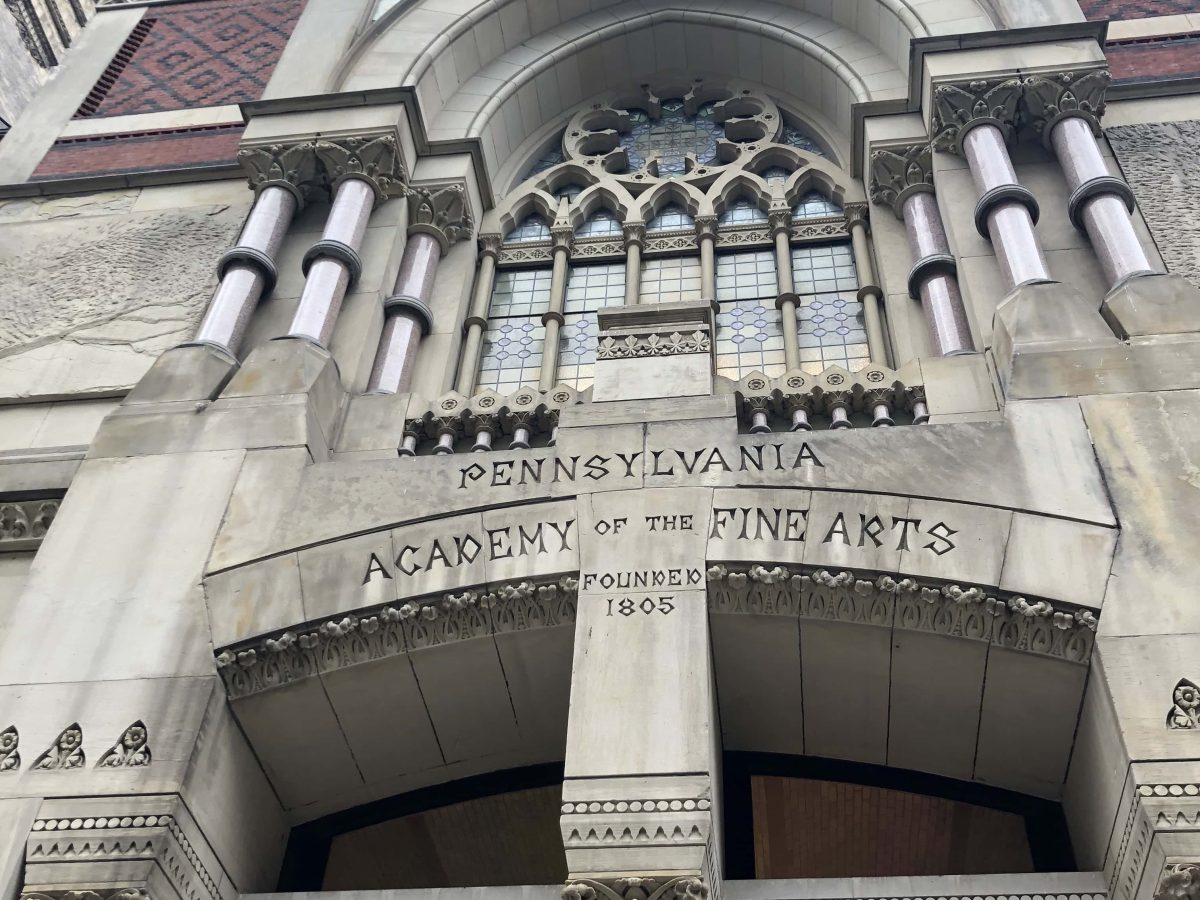Nowadays, New York City is the center of the American art world, but did you know that Philadelphia was actually the nation’s first art capital? From colonial and revolutionary times through the turn of the 20th century, a surprising proportion of the country’s major artists came from the city. The nation’s earliest museum and art school were both located there, and the city’s great history of artists, collectors, and teachers continues through today. All that history has gifted Philadelphia with plenty of brilliant but often-overlooked art museums. Here are six of my favorites.
Hey everybody! I’m just reminding you that everything in a museum is subject to change – exhibitions, artworks on display, opening times, and prices. I can only tell you what the museum was like the last time I was there, which might not stay the same. It’s not only that exhibitions change and prices increase; I’ve revisited museums and found their fundamental personalities to be really different from my last visit (or that half their galleries are closed for renovation). I know how sad a disappointing museum visit can be, so I’m reminding you to check everything out on the museum’s website ahead of time.
Philadelphia Museum of Art

What’s there: A major collection of American art, especially Pennsylvania artists; European painting, sculpture, and decorative arts from the Middle Ages to the present; diverse Asian art.
In many ways, the Philadelphia Museum of Art is a classic big-city art museum. It’s large and impressive, with a broad, world-class collection and a classically-inspired building with modernist additions. What I really enjoy about it, though, is that it’s just a bit smaller and less overwhelming than most of its cousins, but it still offers tons of great stuff to see. Personally, I gravitate towards the American art collections, of which Thomas Eakins’s monumental medical painting The Gross Clinic is a major highlight with local significance. However, all three of its major geographic areas – Europe, America, and Asia – contain standout artworks. In addition to paintings, sculptures, and decorative arts, the museum is noteworthy for its many period rooms (transplanted historic interiors), including a South Indian temple and a reception hall from a Chinese palace.
The Philadelphia Museum of Art is also famous for its front steps, which featured in the classic 1976 film Rocky. If this is an attraction for you, I should mention that these will not necessarily be the steps you use to enter the museum. But while you’re outside, be sure to visit the adjacent Anne d’Harnoncourt Sculpture Garden.
Location: 2600 Benjamin Franklin Parkway – within Fairmount Park on the banks of the Schuylkill River. I had a nice time walking along the nearby paths in the park after leaving the museum. There are plenty of public sculptures and other monuments to enjoy. The Ben Franklin Parkway itself also looks like it has some nice strolling opportunities.
Admission: $30 for adults. The ticket also includes the Rodin Museum.
The Rodin Museum
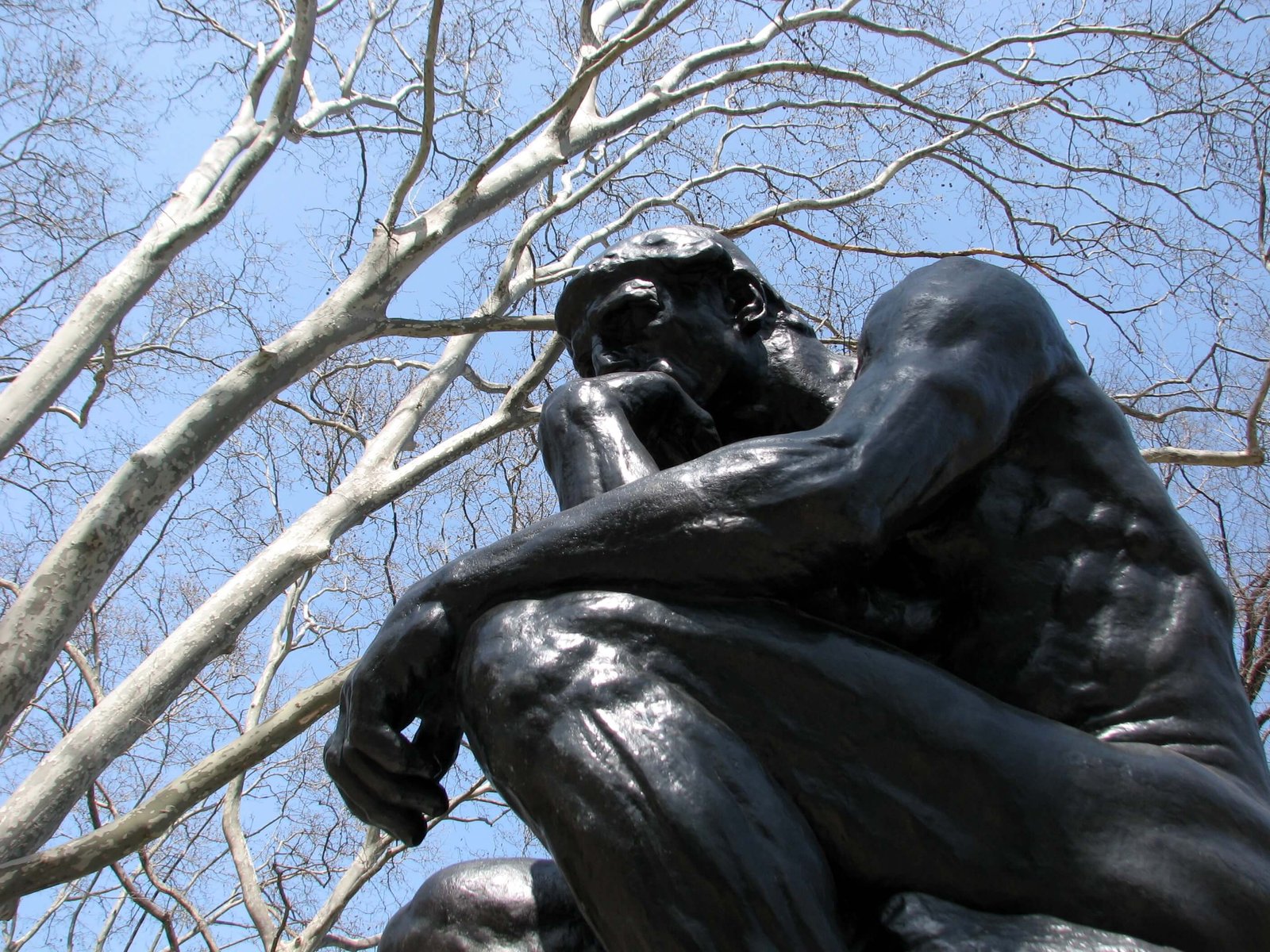
What’s there: Sculptures and drawings by celebrated French sculptor Auguste Rodin.
Part of the PMA complex, the Rodin Museum is a small but rich museum filled with sculptures and drawings by celebrated French sculptor Auguste Rodin (1840-1917). You’re unlikely to see a better collection of French sculpture anyplace in the United States. I haven’t visited recently, so that’s as much as I can say at the moment.
Location: 2151 Benjamin Franklin Parkway – a 15-minute walk through Fairmount Park from the Philadelphia Musuem of Art
Admission: The Rodin Museum is pay what you wish (you give an amount of your choice to enter) but is totally free with a valid PMA ticket.
The Barnes Foundation
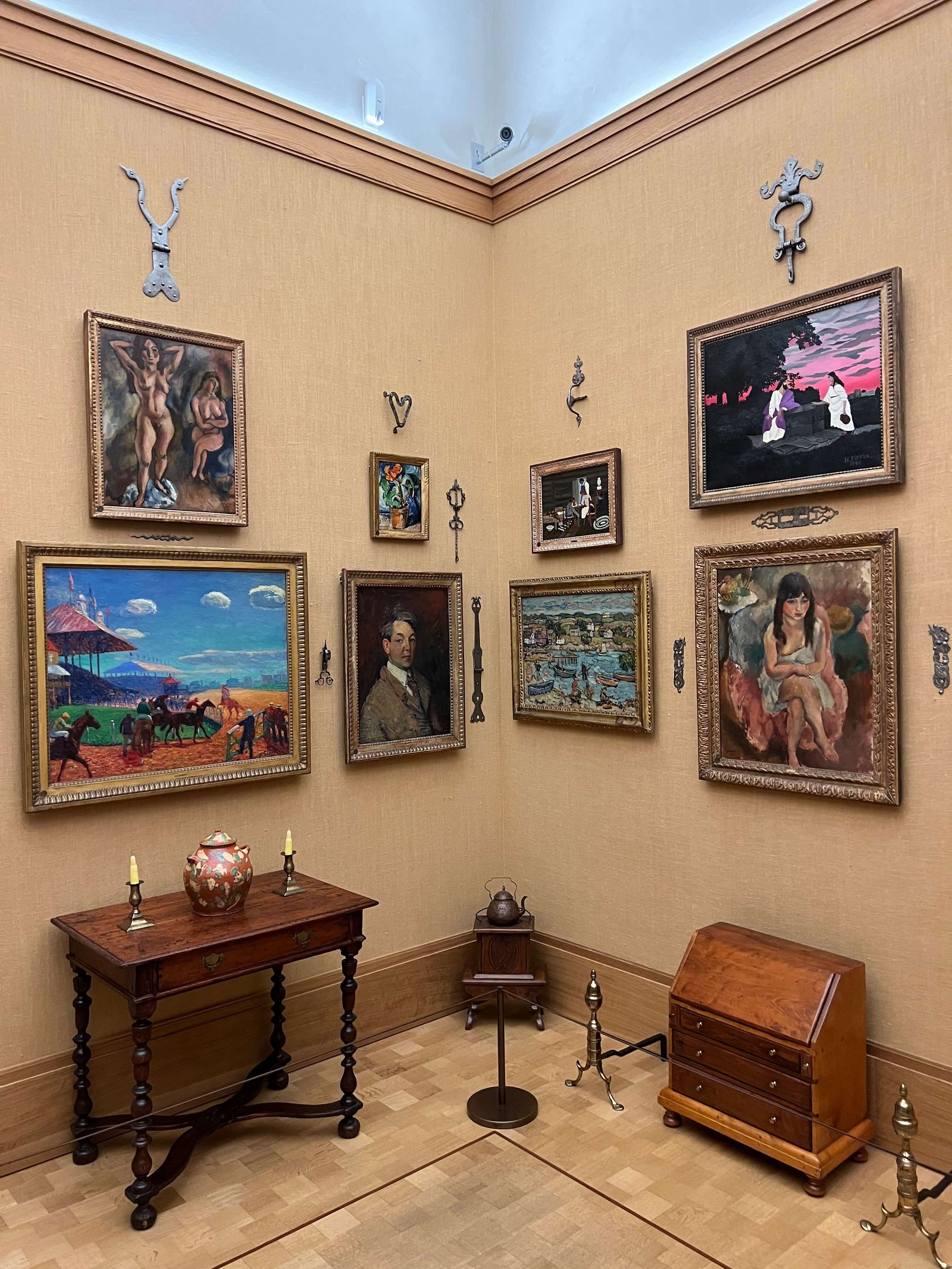
What’s there: A little bit of everything from worldwide antiquities to Old Masters, African statuary, Modern painting and sculpture, and American folk art. However, the Barnes is most famous for its extensive, world-class collection of Modern art, especially Barnes’s favorite artists Renoir and Cezanne, with literally dozens of works by each.
The Barnes Foundation is one of those museums that boldly proclaims its founder’s unique point of view. That founder was Albert C. Barnes (1872-1951), a doctor and chemist who made his fortune in pharmaceuticals and spent it on art. He not only created his own personal museum but also developed his own art theories and founded a (still running) school of art appreciation. The museum showcases his highly-varied collection in rooms (called “ensembles”) that Barnes himself specifically curated to emphasize different aesthetic elements. Originally in the founder’s former home in a suburb of Philadelphia, the museum controversially moved to a modern structure in the center of the city in 2012. However, all of the ensembles are still displayed just as Barnes designed them.
Even though it’s not a massive museum in terms of square footage, the Barnes is filled to the brim with art, so there’s a lot to absorb. Furthermore, the galleries juxtapose artworks from all times and places in the same galleries. (In Barnes’s aesthetic theories, geography and chronology were much less important than visual qualities.) This demands thought and attention in a way that traditional time-and-place curation perhaps doesn’t. Barnes was clearly trying to teach us something with these arrangements, but with no wall texts of any kind, there’s nothing to outwardly indicate what quality you are meant to observe within each assemblage. It’s up to you to figure it out yourself through observation and contemplation. This is definitely a museum that you need to go into fresh, and after a first visit that was honestly kind of overwhelming, I look forward to doing exactly that next time I’m in Philadelphia.
Location: 2025 Benjamin Franklin Parkway – not far from PMA and the Rodin Museum but just outside Fairmount Park.
Admission: currently $25 ($30 after April 1, 2024). The ticket is valid for two days, which is great for locals and those staying in the Philadelphia area.
Pennsylvania Academy of the Fine Arts
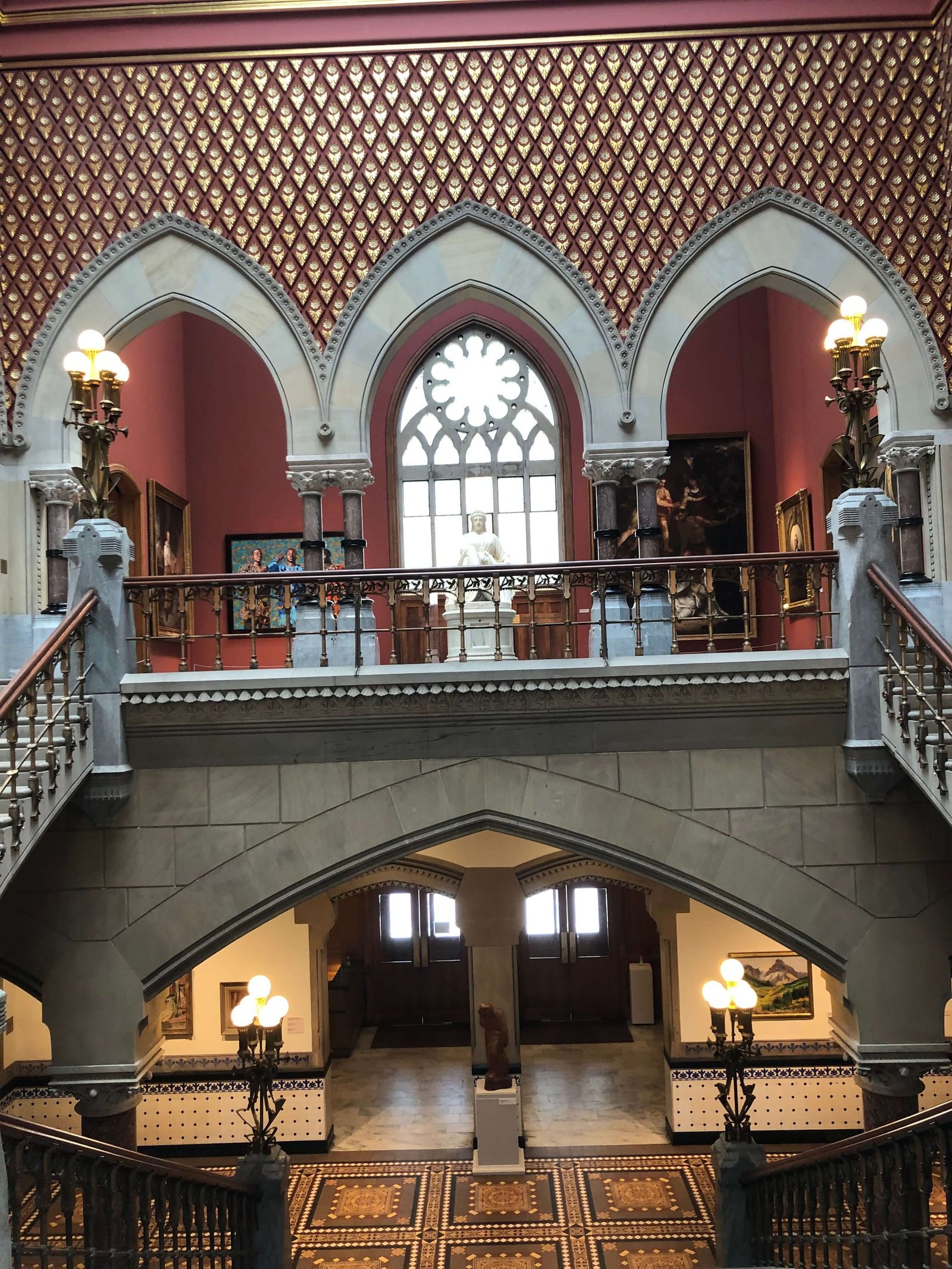
What’s there: American art from the 18th century to the present.
Founded in 1805, the Pennsylvania Academy of the Fine Arts (PAFA) is the oldest art school and artists’ membership institution in the United States. It also boasts a great but under-appreciated museum filled with works by American artists, especially PAFA’s two centuries’ worth of illustrious members and teachers. Plus, the museum’s 1876 Frank Furness-designed building is absolutely fantastic – a particularly colorful rendition of Neo-Gothic.
The PAFA museum definitely doesn’t display anywhere close to all its holdings. Its exhibitions are a mixture of historical and contemporary, permanent and temporary. Basically, it’s a dice roll what you’re going to see from the collection, since hosting large-scale temporary exhibitions seems to take up most of the gallery space. The museum’s great highlight, at least in my opinion, is The Artist in His Museum – a self-portrait of PAFA founder Charles Willson Peale in his self-created art and science museum (America’s earliest). During my visit a few summers ago, I enjoyed an exhibition of historical female artists with PAFA connections. Despite its prominence, the museum at PAFA is not particularly large, so you can easily absorb everything in afternoon. In addition to the historic building, there are also special exhibitions in the Samuel M.V. Hamilton building next door.
Location: 118-128 North Broad Street, Philadelphia – about a 10-minute drive from the three above museums and in a not-as-nice area (in my opinion). I wouldn’t call it rough necessarily, but I felt slightly uneasy walking alone between the museum and my car. Buy your ticket in the Samuel M.V. Hamilton building, which is across the side street from the Historic Landmark building.
Admission: $18 for adults – less than the other museums on this list but a bit pricey given the museum’s relatively small size.
Woodmere Art Museums

What’s there: American art with a focus on Philadelphia and female artists.
Located in a converted mansion out in Philadelphia’s Chestnut Hill area (away from the city center), the Woodmere Art Museum specializes in artists with Philadelphia connections. In particular, the museum hosts a massive collection of works by Violet Oakley (1874-1961) – the painter, illustrator, and PAFA teacher who is most celebrated for her monumental murals in the Pennsylvania State Capitol building. Her work, which includes applied arts like book illustration and stained glass in addition to paintings and drawings, belongs to the Arts and Crafts movements and often features medieval subject matter. When I visited in 2018, the entire building was hosting a huge exhibition dedicated to Oakley, so I didn’t really get to see the rest of the collection and am not sure how much of it is regularly on view. However, I understand that it’s particularly strong in Hudson River School paintings and works by female artists.
Location: 9201 Germantown Avenue in the Chestnut Hill suburb of Philadelphia, about a 30-minute drive from the Ben Franklin Parkway museums.
Admission: $10 for adults but free for everyone on Sundays.
Penn Museum – Added to the list in August 2025!
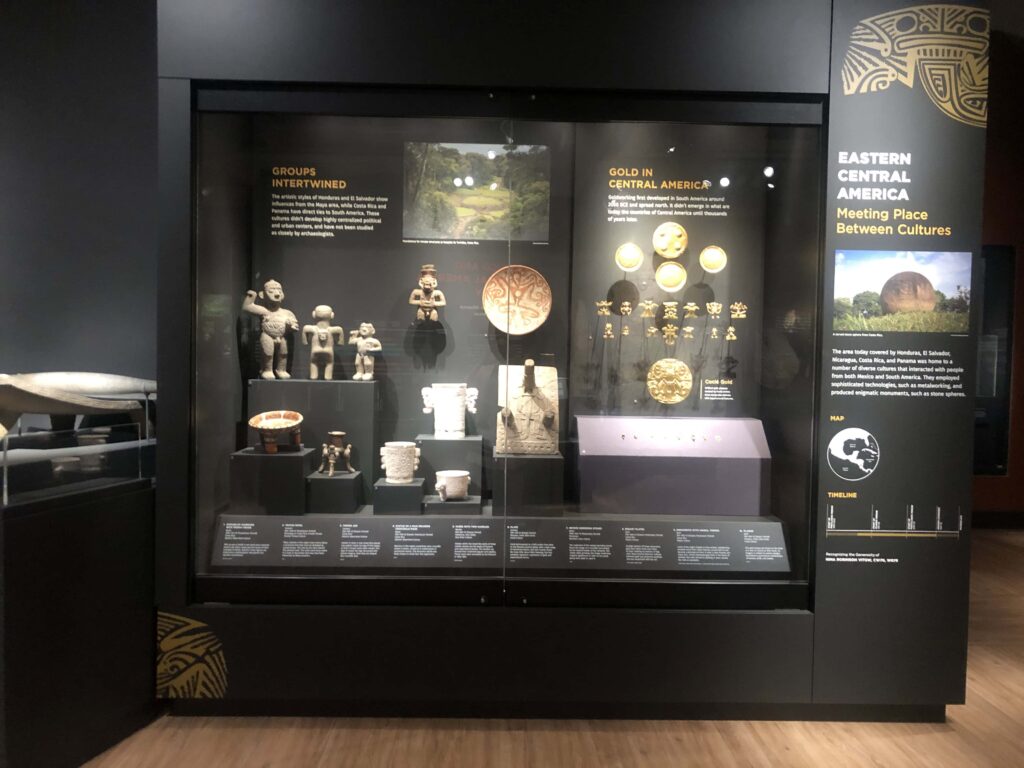
What’s there: Art objects from tons of cultures around the world, including ancient Egypt and Nubia, Mesopotamia, Mesoamerica, Buddhist Asia, ancient and modern North America, the ancient Mediterranean, and historical Africa.
Technically, the Penn Museum isn’t actually an art museum; it’s the University of Pennsylvania’s archeology and anthropology museum. But there’s still tons of art to see here. That’s because archaeology is the study of human history through objects, and artworks are a pretty major category of objects. The University of Pennsylvania has had an influential archaeology program for at least a hundred years now, and many of the objects on display come from the school’s major excavations. There are textiles, jewelry, pottery, porcelain, metalwork, coins, statues, architectural fragments, religious items, and more. The objects are fantastic – there’s even a sphinx! -and the appeal to any art lover is obvious.
What I really like about this museum is the fresh perspective it provides on familiar types of objects. Unlike art historians, archaeologists are more interested in what these artifacts can tell us about past cultures then they are in aesthetics. So, text, video, and touchscreens within the Penn Museum tell us about how ancient people lived and worked, what they ate, how they communicated, their religious practices and beliefs, their politics and social structures, their values, and more. I heard Etruscan spoken, saw displays about excavation and conservation, deciphered Mayan glyphs, and even got to touch reproductions of ancient Egyptian objects. This is so different from what I would get in an art museum, and I found it to be really informative and illuminating.
Leave yourself at least four hours to spend in the Penn Museum. It’s worth every minute.
Location: 3260 South Street, Philadelphia, within the University of Pennsylvania’s sprawling campus and near its medical center.
Admission: $18 for adults
